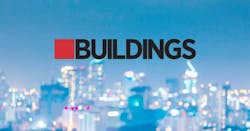How to Use SaaS in Your Facility to Benefit Tenants, Bottom Line
Software as a Service (SaaS) is an attractive technology for facility managers and building owners often tasked to do more with less. SaaS is cloud-based software offered as a subscription. It can tackle any problem in your building or challenge in managing a facility.
5 Benefits of SaaS technology include:
1. Software that’s always up to date
2. The ability to get up and running quickly with the software
3. Access across devices and locations
4. Secure solutions
5. A reduced need for in-house staff to manage the application
SaaS is the most common software delivery method today, notes Phil Mobley, vice chair of the BOMA Technology Committee and head of research for tenant experience for Building Engines. But it’s also in flux because there’s a lot of promise and people are overwhelmed by it, he says.
“It’s too much for any one person to focus on,” says Mobley. “Even if you parse the technology down to specific subcategories and capabilities, it’s still overwhelming for professionals being asked to do more with less.”
Software as a Service Challenges
According to findings in the “Commercial Real Estate Technology Trends 2018” report that Mobley was involved with through BOMA and Building Engines, time and resource constraints are the largest obstacles to replacing underperforming commercial real estate (CRE) technology solutions.
Owners and managers need to make the time to determine new solutions, Mobley states. But these findings are also indicative of the bare bones staffing in which many commercial properties are now being run.
“There’s a frustration that enterprise-level technology overpromises and underdelivers,” Mobley notes. “When combined with an industry that has a sense of overwhelmingness with work, the approach is often fear-based.”
He says, “Building owners often think ‘I’m going to make a bad decision, I’m not going to evaluate well,' and even after making a decision feel they might not get the adoption or data they want/need.”
These include challenges on the front and back ends:
-
Front end: Tracking employee time and the learning curve associated with getting up to speed on the new technology.
-
Back end: Interoperability, where systems would talk to each other but often don’t. People should narrow the scope of what they are looking for from software while balancing layering another set of tools and apps into the daily workflow.
The biggest barrier to adopting SaaS technology that Eddy Wagoner, CIO for Corporate Solutions at JLL, has seen is that building owners and facility managers aren’t technologists to properly evaluate solutions but are being presented with new technologies that say they will solve problems or create opportunities in the buildings.
Wagoner has noticed a sea change in the number of SaaS products available in the past 18 months. In that time, building owners and occupants have become more aware of SaaS and have wanted to take advantage and exploit the applications and data that come out of it to create a better workplace and experience.
“Suddenly, it’s like the first thing on everyone’s mind: How do we create these workplaces and these buildings; how do we set our space apart so we can attract and retain the top talent?” he explains.
The Best Solution for Your Facility
There are many things to consider to decide what technology is right for your needs:
For building owners:
Create an experience where people like to come to work and the building, and enjoy its amenities. This will help the tenants of the building want to retain or extend the space and makes the building more desirable.
“The more desirability you have, the more demand you have, the more value you have. You will have a more competitive building,” Wagoner says.
For facility managers:
The focus is on efficiency to better deliver building services. In the past, you had to call a call center and wait for someone. If you can self-request, it makes it more efficient for everyone, Wagoner notes.
When evaluating SaaS solutions, make sure each application and package can interact and integrate with one another, your current systems and those you plan to use in the future (as best you can determine).
[Related: Perpetual Licensing Lets SaaS Users Keep Their Content]
“You want to make sure you’re not only thinking long term, end to end and about tenant experience, but also of a building as a collection of its ecosystems,” Wagoner suggests.
Getting Started With Software as a Service
A successful SaaS implementation involves thinking about the affected people, systems and buildings. Mobley and Wagoner offer these four tips on how to determine and roll out a solution:
1. Determine what problem needs to be solved.
Start the search for a SaaS solution knowing what challenge you want to address. Next, think about the best way to address it for the people, technologies and processes that are or might be available. “Usually what that means is narrowing the definition and scope of the problem,” Mobley says. “Technology is about business: I have a business problem I need to solve.”
2. Think end to end.
While the solution might address a specific problem, consider other benefits. This is achieved by designing a strategic roadmap for the future. “Maybe you can’t do the other things right now, but you can address the one solution now with your end state in mind,” Wagoner encourages. Understand that technology will change, but keep the end in mind.
3. Involve user stakeholders in the decision process.
This immediately gives you some buy-in and a champion for your cause, Mobley says. If you have someone who’s going to be a power user and has been involved and part of the process, that person can be explain to others why it’s being used, answer questions and demonstrate how to use the technology.
4. Consider the financial impact.
People should look at and think about the positive affects SaaS can have on your building financially. “If we create a workspace where people come to work and love it, they will focus less on the space and more on the work,” Wagoner notes. “That reducing turnover and attracting top talent is worth a lot.”
Building Improvements and Occupant Satisfaction
Once a system’s in place, Wagoner encourages helping occupants understand how to use the building and use SaaS to enhance employee experiences.
The companies that will survive competitively are looking to the future and are making changes to their business practices based on what they see in the industry and economy. SaaS and related technology will become a competitive imperative, and the building owners and facility managers who figure out how to use it to further their facilities first will be at an advantage, Wagoner says.
One of the nice things about the software and the “as a Service” model is that there isn’t generally a lot of infrastructure to install or pay for, Mobley says. “Take a deep breath, define your problem narrowly and don’t be afraid of making a bad choice.”
Two handpicked articles to read next:
About the Author

Valerie Dennis Craven
Content strategist and writer
Valerie Dennis Craven is an experienced writer of commercial and residential buildings and interiors, having previously served as Editorial Director for both BUILDINGS and i+s. Valerie enjoys writing about technology and how it impacts users in the built environment.
